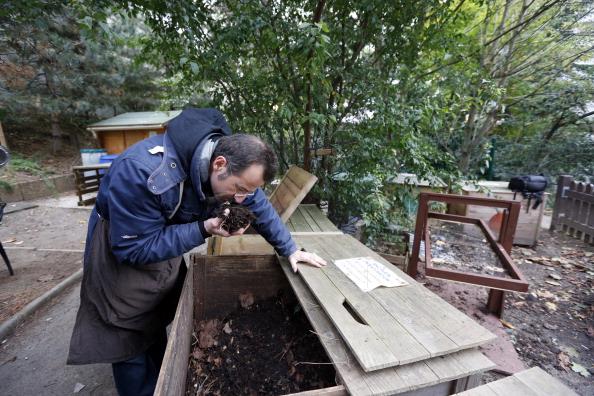When you start composting, it’s remarkable to see how much less trash you generate every week. For instance, in my house, with 2 adults full time and 2 kid on weekends, we went from 4 bags a week to 2, and sometimes 1 (we’re prodigious recyclers, too). Multiply that by the number of households in the United States and indeed the world, and that is a startling amount of landfill space up for grabs… or would be, if every household was composting and recycling. In fact, according to this infographic (courtesy of Fix.com), each household in the U.S. creates on average 650 pounds of waste which could easily be funneled into the compost pile.
We gardeners know that compost is black gold—it nourishes our soils and plants with micro nutrients unavailable in commercial fertilizers, and the bacteria and fungi feed the soil food web. We save tons of money on bagged compost ($1 or more per cubic foot) and if we have enough homemade, need little if any organic fertilizer.
But urban dwellers without gardens are composting, too. Programs in cities like San Francisco, Portland, Denver, Boulder, Seattle, Ann Arbor, Salt Lake City, Santa Cruz, and New York City, are diverting literally mountains of organic waste from landfills via curbside collection. The compost made from that organic waste is distributed at municipal sites for residents, and used to fertilize trees and plants in public parks and community gardens.
So what goes into your first compost pile? It’s simple: stop dumping food scraps and coffee grounds into the trash—anything you eat can be composted (Some guides recommend that you don’t compost meat scraps and bones. This is not because they’re bad to compost—they are great, in fact—but because they have a tendency to attract unwanted visitors like raccoons and neighborhood dogs to your compost pile). Add carbon materials like black and white newspaper, twigs, dead leaves, plant clippings, pet hair, and grass clippings to your food scraps and before you know it, you have black gold…
If you want to build your own bin on the cheap, try this compost bin made with a plastic garbage can or a larger compost bin made with free shipping pallets.
This article was originally written and published by Todd Heft, the head writer and administrator for BigBlogOfGardening.com. Please click HERE to link to the original article for more information.




